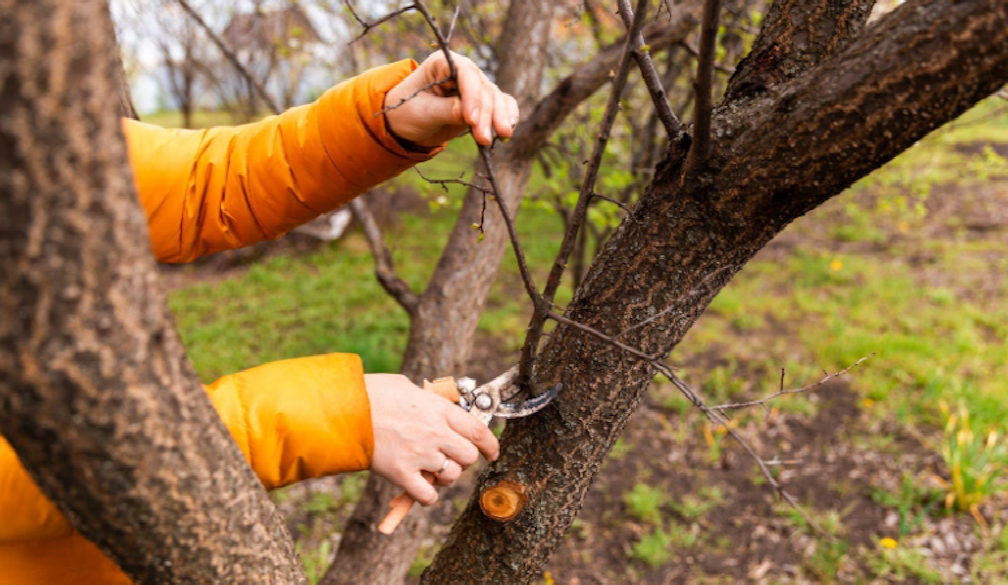Year-Round Tree Maintenance Guide for Australian Homeowners

Taking care of trees is an essential part of maintaining a healthy and beautiful garden, especially in Australia. Our unique climate, with its mix of extreme heat, drought, and occasional frost, presents specific challenges and benefits when it comes to tree care. Caring for trees throughout the various seasons ensures that they remain healthy, resilient, and visually appealing. This guide will explore the basics of year-round tree maintenance, covering seasonal tasks, essential tools, effective pruning techniques, pest control, and proper soil and water management.
Seasonal Tree Care: What to Expect in Each Season
Each season brings its own set of tasks and considerations for tree care:
Summer: The summer months can be harsh on trees due to high temperatures and prolonged dry spells. Managing dry conditions and preventing heat stress become priorities. Watering deeply and infrequently helps promote deep root growth, making trees more resilient to drought. Mulching around the base can conserve moisture and regulate soil temperature.
Autumn: As temperatures begin to drop, it's time to prepare trees for the cooler months. This includes managing fallen leaves, which can be used as mulch or compost. Autumn is also a good time to prune trees and clear any dead or diseased branches, ensuring they are ready to withstand winter conditions.
Winter: Pruning is a key task in winter when trees are dormant. This is the best time to shape trees and remove any weak or crossing branches. Protecting young or sensitive trees from frost is crucial. Wrapping the base with burlap or using tree guards can help.
Spring: Spring is a season of renewal and growth. Encouraging new growth by fertilising and performing necessary pest control measures is essential. It's also a time to inspect for pests and diseases and address any issues promptly to prevent them from spreading.
Essential Tools and Equipment for Tree Maintenance
Having the right tools makes tree maintenance more efficient and safer. Here's a list of recommended items:
- Pruning shears and loppers for cutting small to medium-sized branches.
- A pruning saw for thicker branches.
- A pole pruner to reach higher limbs.
- Hedge trimmers for shaping.
- Rakes and leaf blowers for cleaning up debris.
- Safety gear, including gloves, helmets, protective eyewear, and harnesses for climbing.
- Specialised equipment for Australian tree species, such as eucalypts, which might require specific saws or lopping tools.
Regular tool maintenance is critical to ensuring their longevity and effectiveness. Clean and sharpen blades, oil moving parts, and replace worn-out gear promptly.
Pruning Techniques for Healthy and Beautiful Trees
Proper pruning enhances tree health and aesthetics. Different species have varying pruning requirements, so it's important to know the best times to prune:
- Deciduous trees are best pruned in winter when they are dormant.
- Evergreen trees can be pruned in late winter or early spring before new growth starts.
- For flowering trees, prune after the flowering period to avoid removing buds.
Basic pruning techniques include:
- Removing Deadwood: Cuts should be made just outside the branch collar to promote healing.
- Thinning: Selectively removing branches to increase light and air penetration.
- Shaping: Ensuring a balanced form by trimming awkward or uneven branches.
Advanced pruning for structural integrity involves techniques like crown thinning, reduction, and raising. It is important to avoid common mistakes such as over-pruning, which can stress trees and make them susceptible to disease.
Dealing with Common Pests and Diseases
Australian trees can be affected by various pests and diseases. Some common ones include:
Myrtle rust: A fungal disease affecting myrtles.
Eucalyptus beetles: These pests can cause significant damage to eucalyptus species.
Borers: Insects that bore into wood, causing structural damage.
Treating these issues involves a mix of natural and chemical options. Natural remedies like neem oil or insecticidal soaps work well for minor infestations, while more severe cases might require professional-grade pesticides. Preventive measures include:
- Regular inspection of trees for early signs of infestation or disease.
- Practising good garden hygiene, such as removing fallen leaves and dead branches.
- Encouraging biodiversity to attract natural predators of pests.
Signs to watch for include discolouration, wilting, holes in leaves or bark, and abnormal growth patterns
Soil and Water Management for Thriving Trees
Healthy soil and consistent watering practices are vital for tree growth. Here's what to consider:
- Soil Quality: Testing the soil can reveal pH levels and nutrient deficiencies. Australian soil often benefits from the addition of organic matter, which improves structure and fertility.
- Effective Irrigation: During dry spells, deep watering is more beneficial than frequent shallow watering. Drip irrigation systems are efficient for maintaining the right moisture levels.
- Mulching: Applying mulch around the tree base helps retain moisture, suppress weeds, and improve soil quality over time. Organic mulches like wood chips and compost are highly recommended.
- Fertilisation: Trees generally need to be fertilised in spring and late summer. A balanced, slow-release fertiliser can provide essential nutrients. Avoid over-fertilising, as it can harm the tree by encouraging excessive, weak growth.

















